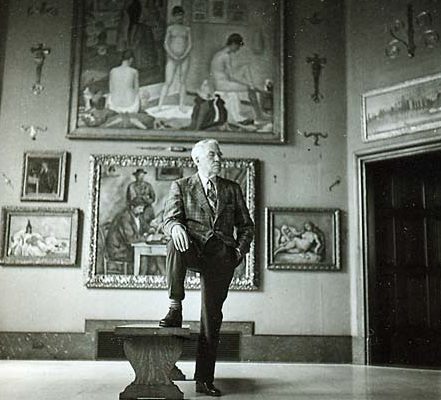I must admit, I knew nothing about the Barnes Foundation before I made the documentary "The Art of the Steal." It’s a private art gallery and school that houses one of the most breathtaking and important Post-Impressionist and early modern art collections in the world.
As I was soon to find out, it was much more than that.
The collection’s unrivaled holdings are staggering in quantity: 181 paintings by Renoir, 69 by Cézanne, 59 by Matisse and 46 by Picasso, including many  masterpieces.
masterpieces.
Dr. Albert Barnes was a self-made man with a well-trained eye who assembled the art in the early 1920s.
He snubbed the provincial elites in his hometown of Philadelphia by housing his collection in the Philadelphia suburb of Merion.
The first time I walked into the main gallery at the Barnes, I got chills. To this day, every time I go, I’m reminded how powerful and important this place is. It’s not just a bunch of paintings on a wall — rather, the entire collection is itself a work of art.
Barnes had a passion for what he was doing, and he was more concerned with educating serious students in his vision than reaching casual tourists, so he restricted attendance and refused to loan paintings to other institutions.
His individualism earned him antagonists among the Philadelphia elite, but also gained him many loyal supporters.
Upon Barnes’ death in 1951, his will gave control of the collection to the trustees of Lincoln University, the first black university in the United States. His will also stipulated that the collection should “never be loaned, sold or otherwise deposed.”
For the past 50 years the Barnes Foundation has been under siege, first by outside special interests, more recently by the Barnes trustees themselves.
The trustees, along with other political and philanthropic allies, saw an opportunity to exploit this art in a much more lucrative way than to honor the wishes of Albert Barnes and maintain the integrity of this institution.
Ironically, this film has done more to promote the Barnes Foundation and the ideals of its founder than its current administration has ever done. They have given up on any options that would make the foundation sustainable in Merion. Their mission became the move of the collection into Philadelphia, and they never looked back once that was decided.
It’s a story full of great characters, scandal, race, political intrigue, art vs. commerce and philanthropy as big business. It’s been described as a “heist film” and a ”classic whodunit.”
One of the things we really tried to do was to bring the late Albert Barnes back to life on film. This is his story, after all, and the longer he’s been gone, the easier it is to forget about him.
He has been reduced to a name on a building. But he is the central character and he and his wishes have ultimately gotten lost in the circus that has transpired since he died.